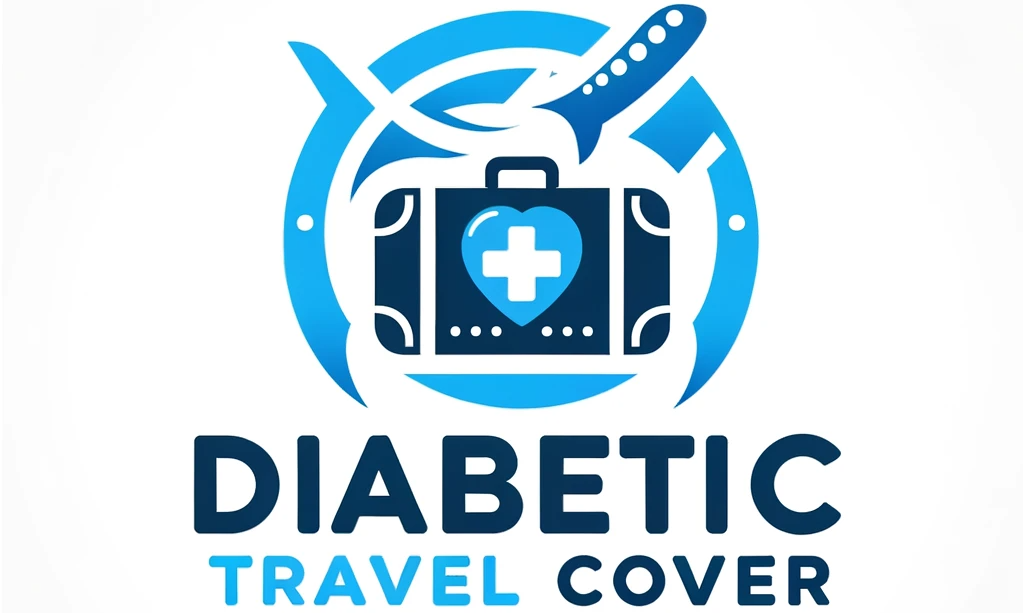Are you frustrated with your insurance provider refusing coverage for Ozempic? In this article, we will explore the reasons behind insurance companies denying coverage for this medication and provide you with insights on how to navigate the situation. Get ready to understand the potential roadblocks and learn how to advocate for yourself when seeking coverage for Ozempic.

Understanding Ozempic
What is Ozempic?
Ozempic is a prescription medication used to treat type 2 diabetes. It belongs to a class of drugs called GLP-1 receptor agonists, which work by stimulating the release of insulin and reducing the production of glucose in the liver. Ozempic, whose generic name is semaglutide, is administered as a once-weekly injection. It is designed to help improve blood sugar control in people with diabetes by regulating insulin levels and promoting weight loss.
How does Ozempic work?
Ozempic works by mimicking the action of a hormone called glucagon-like peptide-1 (GLP-1). GLP-1 helps regulate blood sugar levels by stimulating insulin secretion, slowing down gastric emptying, and reducing appetite. By activating GLP-1 receptors in the body, Ozempic helps lower blood sugar levels, improve insulin sensitivity, and decrease appetite, leading to better glycemic control and potential weight loss.
Benefits of Ozempic
Ozempic has shown significant benefits for people with type 2 diabetes. Clinical trials have demonstrated its effectiveness in lowering A1C levels, a measure of long-term blood sugar control. In addition to improving glycemic control, Ozempic has also been associated with weight loss and a reduced risk of cardiovascular events. Many patients report feeling more satisfied with their eating habits and experiencing fewer glucose spikes throughout the day. Additionally, the once-weekly injection schedule makes it more convenient and manageable for patients.
Insurance Coverage for Medications
How insurance coverage works
Insurance coverage for medications is a complex system that varies depending on the insurance provider, policy, and specific medication. Typically, insurance coverage involves a combination of premiums, deductibles, copayments, and coinsurance. It is important to understand how these components work in order to navigate the process effectively. Generally, insurance coverage requires individuals to pay a portion of the medication cost, while the insurance company covers the rest.
Factors affecting insurance coverage for medications
Insurance coverage for medications can be influenced by several factors. Drug formularies, which are lists of medications approved by insurance companies, play a significant role in determining coverage. The availability of generic alternatives, the medication’s classification, and its therapeutic benefits also impact coverage decisions. Additionally, the cost of the medication, its clinical evidence, and any off-label use can affect whether or not it is covered by insurance.
Tiered formulary systems
Many insurance companies use tiered formulary systems to categorize medications based on their cost and clinical value. These systems typically consist of several tiers, with tier 1 medications being the most affordable and tier 4 medications being the most expensive. In some cases, medications like Ozempic may be placed on higher tiers, requiring patients to pay more out-of-pocket. Understanding the specific tier placement and coverage levels for Ozempic can help individuals anticipate their financial responsibility.
Challenges with Insurance Coverage for Ozempic
Ozempic as a new medication
One of the challenges associated with obtaining insurance coverage for Ozempic is that it is a relatively new medication. Insurance companies often prefer to cover medications that have been on the market for a longer period of time and have established safety and efficacy profiles. As a result, Ozempic may not be automatically included in insurance formularies, requiring patients and healthcare providers to go through additional steps to obtain coverage.
Limited clinical evidence
Another challenge is the limited clinical evidence available for Ozempic compared to more established medications. Insurance companies rely on clinical trials and research studies to determine the effectiveness and safety of a medication. While Ozempic has shown promising results in clinical trials, there may be some hesitancy from insurance companies to provide coverage until more long-term data becomes available. This can present obstacles for patients seeking access to this medication.
Off-label use of Ozempic
Off-label use of medications refers to the use of a drug for a medical condition that is not specifically approved by regulatory agencies. While Ozempic is primarily indicated for type 2 diabetes, there may be instances where healthcare providers prescribe it for other conditions, such as weight management or polycystic ovary syndrome. Insurance companies may be less willing to cover medications used off-label, as they prefer to provide coverage for approved indications only.
Cost-effectiveness considerations
Insurance companies are also driven by cost-effectiveness considerations when deciding which medications to cover. Given the expense of Ozempic, insurance companies may hesitate to provide coverage without strong evidence of its cost-effectiveness compared to other available treatments. This can create barriers for individuals who benefit from Ozempic but struggle to afford it without insurance coverage.
Prior Authorization Process
Definition of prior authorization
Prior authorization is a process that insurance companies use to verify the medical necessity and appropriateness of certain medications before providing coverage. It requires healthcare providers to submit information about the patient’s diagnosis, treatment history, and any supporting clinical evidence to justify the need for the medication. The insurance company then reviews this information and determines whether to approve or deny coverage.
How the process works
When a healthcare provider prescribes Ozempic, they may need to go through the prior authorization process to obtain insurance coverage for their patient. This typically involves completing a specific form provided by the insurance company and submitting it along with relevant medical documentation. The insurance company then evaluates the request, considering factors such as medical necessity, alternative treatment options, and coverage policies.
Requirements for Ozempic prior authorization
The specific requirements for Ozempic prior authorization may vary depending on the insurance provider and policy. Generally, healthcare providers will need to provide documentation supporting the diagnosis of type 2 diabetes, evidence of inadequate glycemic control with other treatments, and a rationale for choosing Ozempic over alternative treatment options. It is essential to work closely with the healthcare provider to ensure all necessary information is included in the prior authorization request.

Appealing Insurance Denials for Ozempic
Understanding insurance denials
Insurance denials occur when an insurance company determines that a medication, such as Ozempic, does not meet their coverage criteria. This can be frustrating and disheartening for individuals who rely on the medication for their health. However, it is important to understand that denials can be appealed through a formal process in order to potentially overturn the decision.
Steps to follow for appealing a denial
If an insurance company denies coverage for Ozempic, there are several steps individuals can take to appeal the decision. First, it is crucial to review the denial letter from the insurance company to understand the specific reasons for the denial. This will help identify the information or documentation needed to support the appeal. The next step involves contacting the insurance company to initiate the formal appeal process and obtain guidance on the necessary forms or documentation to include.
Supporting documentation for the appeal
When appealing an insurance denial for Ozempic, it is essential to provide strong supporting documentation to justify the medical necessity of the medication. This can include medical records, test results, and documentation from the healthcare provider outlining the rationale for prescribing Ozempic. Additionally, providing evidence of failed attempts with alternative therapies or demonstrating the unique benefits of Ozempic for the individual’s specific condition can bolster the appeal.
Other Options for Financial Assistance
Patient assistance programs
Patient assistance programs are resources provided by pharmaceutical companies to help individuals access medications they cannot afford. These programs typically offer discounts, copayment assistance, or even free medications for eligible individuals. For Ozempic, Novo Nordisk, the manufacturer, offers a patient assistance program called NovoCare that may provide financial relief for eligible patients.
Manufacturer discounts
In addition to patient assistance programs, manufacturers may offer discounts or rebate programs to reduce the out-of-pocket costs of their medications. These discounts can be accessed either directly through the manufacturer’s website or through participating pharmacies. It is worth exploring manufacturer discounts for Ozempic to potentially lower the financial burden.
Discount cards and coupons
Discount cards and coupons can be another way to save on the cost of medications like Ozempic. These cards are typically available through various online platforms and can provide significant discounts on prescription medications. Patients can present the card or coupon at the pharmacy to receive the discounted price.
Pharmacy savings programs
Many pharmacies offer their own savings programs or membership cards that provide discounts on prescription medications. These programs can help reduce the cost of medications like Ozempic and make it more affordable for individuals without insurance coverage or with high copayments. It is worth inquiring about pharmacy savings programs at local pharmacies to explore potential cost-saving options.
Medicaid and Medicare coverage
Individuals who qualify for Medicaid or Medicare may be eligible for coverage of Ozempic under these government healthcare programs. Medicaid eligibility varies by state, but it typically includes low-income individuals and families. Medicare provides coverage for individuals aged 65 and older, as well as for younger individuals with certain disabilities. Exploring Medicaid and Medicare as potential avenues for insurance coverage can be beneficial for individuals struggling to obtain coverage through private insurance.

Alternative Medications to Consider
Similar medications to Ozempic
For individuals facing challenges with insurance coverage for Ozempic, there are several similar medications available that may provide comparable benefits. Some examples include Trulicity (dulaglutide), Bydureon (exenatide), and Victoza (liraglutide). These medications belong to the same class of drugs as Ozempic and work by activating GLP-1 receptors to improve blood sugar control and promote weight loss. It is important to consult with a healthcare provider to discuss these alternative options and determine the most suitable medication for each individual’s specific needs.
Discussing alternatives with your healthcare provider
When insurance coverage for Ozempic is challenging to obtain, discussing alternative treatment options with a healthcare provider becomes crucial. Healthcare providers are knowledgeable about the available medications and can recommend alternative GLP-1 receptor agonists or other treatments that may be a better fit for individual patients. Open communication with the healthcare provider allows for a collaborative decision-making process and ensures that the chosen medication aligns with the patient’s goals and needs.
Tips for Navigating Insurance Coverage
Reviewing your insurance policy
Understanding the details of your insurance policy is essential when navigating insurance coverage for medications like Ozempic. Reviewing the policy’s formulary, coverage levels, copayment requirements, and prior authorization guidelines can help individuals anticipate their out-of-pocket expenses and requirements. This knowledge enables individuals to make informed decisions and proactively advocate for their healthcare needs.
Contacting your insurance provider
If there are any uncertainties or questions regarding insurance coverage for Ozempic, it is crucial to contact the insurance provider directly. Speaking with a representative who can provide accurate and up-to-date information on coverage policies, prior authorization requirements, and potential appeal processes ensures that individuals have the necessary information to navigate the insurance landscape effectively.
Seeking assistance from healthcare professionals
Healthcare professionals, including physicians, nurses, and pharmacists, can provide valuable guidance and support when it comes to insurance coverage for medications. These professionals have experience with navigating insurance companies and can assist in completing prior authorization forms, providing supporting documentation, or contacting insurance representatives on behalf of the patient. Seeking their assistance can alleviate some of the challenges associated with insurance coverage.
Utilizing patient advocacy resources
Patient advocacy resources, such as nonprofit organizations or support groups, can provide valuable information and support during the insurance coverage process. These resources often have dedicated helplines and websites that offer guidance on understanding insurance policies, appealing denials, and finding financial assistance options. Utilizing these resources can help individuals better navigate the complexities of insurance coverage for medications like Ozempic.

Understanding the Insurance Industry
Profit-driven nature of insurance companies
It is important to recognize that insurance companies operate as profit-driven entities. Their primary goal is to balance the needs of their policyholders with the financial sustainability of their business. This profit-driven nature can sometimes result in coverage decisions that prioritize cost savings over individual patient needs. Understanding this aspect of the insurance industry can help individuals advocate for their healthcare and navigate the system more effectively.
Role of pharmacy benefit managers (PBMs)
Pharmacy benefit managers (PBMs) are intermediaries between insurance companies, pharmaceutical manufacturers, and pharmacies. They negotiate drug prices, create formularies, and manage the prescription drug benefit for insurance plans. PBMs play a significant role in the decision-making process of insurance coverage for medications like Ozempic. Their influence on coverage policies and formulary placement can impact patients’ access to specific medications.
Influence of pharmaceutical industry on coverage
The pharmaceutical industry also plays a role in insurance coverage decisions. Pharmaceutical companies invest significant resources in research and development, and they seek to recoup those investments through the sales of their medications. The pricing strategies employed by pharmaceutical companies can influence insurance coverage decisions, as insurance companies assess the cost-effectiveness of medications compared to other available alternatives.
The Future of Insurance Coverage for Ozempic
Ongoing studies and clinical trials
As Ozempic continues to be studied and researched, more clinical evidence will become available to support its use and efficacy. Ongoing studies and clinical trials are continually adding to the body of evidence regarding the benefits and safety profile of Ozempic. This ongoing research can help insurance companies make more informed coverage decisions in the future.
Changes in insurance coverage policies
Insurance coverage policies are not static and can evolve over time. As medications like Ozempic gain more recognition and evidence, insurance companies may update their coverage policies to include them in their formularies. It is important for patients and healthcare providers to stay informed about any changes in the insurance industry and advocate for broader coverage of medications that prove to be effective and beneficial.
Advocacy efforts for better coverage
Advocacy efforts are essential for driving changes in insurance coverage policies and improving access to medications like Ozempic. Patient advocacy groups, healthcare providers, and individuals affected by diabetes can collectively work towards raising awareness about the benefits of Ozempic and advocating for its coverage by insurance companies. Through these efforts, individuals can contribute to shaping a future where insurance coverage for Ozempic and other necessary medications is more accessible and inclusive.
In conclusion, navigating insurance coverage for medications like Ozempic can present challenges due to various factors, including limited clinical evidence, off-label use, and cost considerations. Understanding the insurance industry, utilizing patient assistance programs, exploring alternative medications, and advocating for better coverage are strategies that individuals can employ to overcome these challenges. By staying informed, seeking support, and engaging in advocacy efforts, individuals can work towards improving access to important medications for the management of type 2 diabetes.


